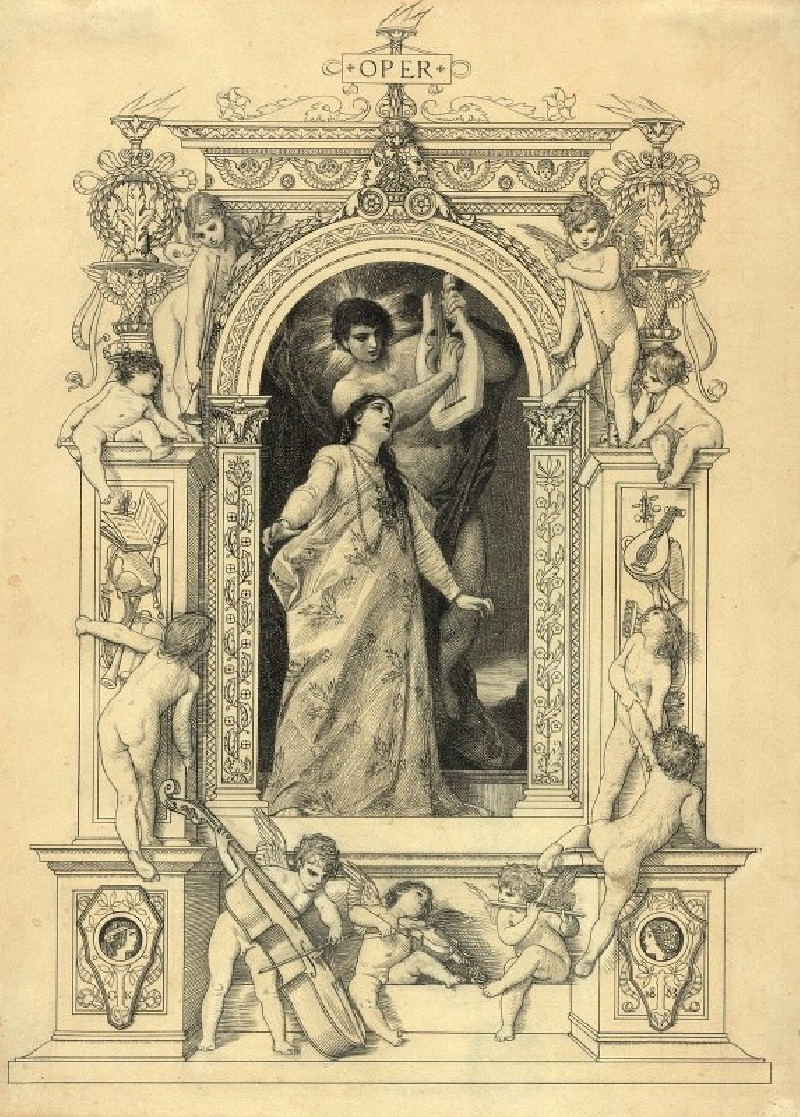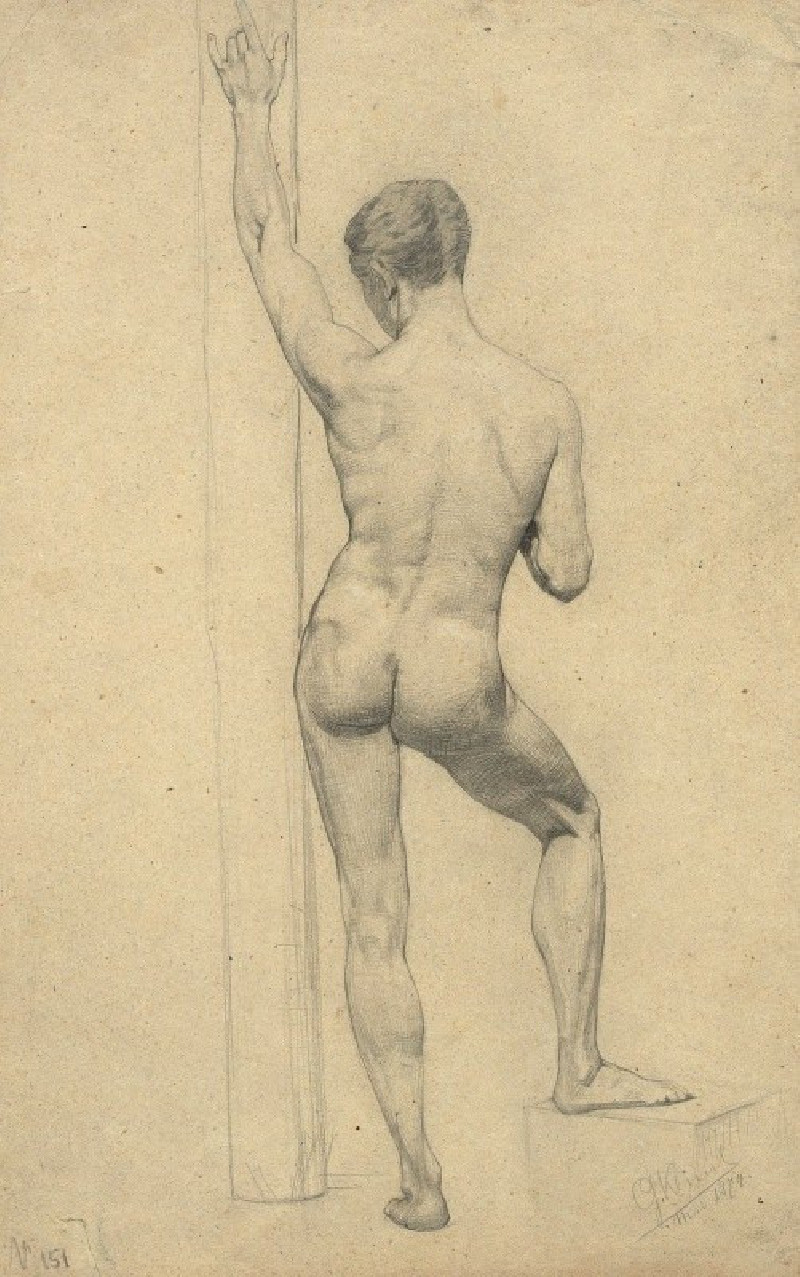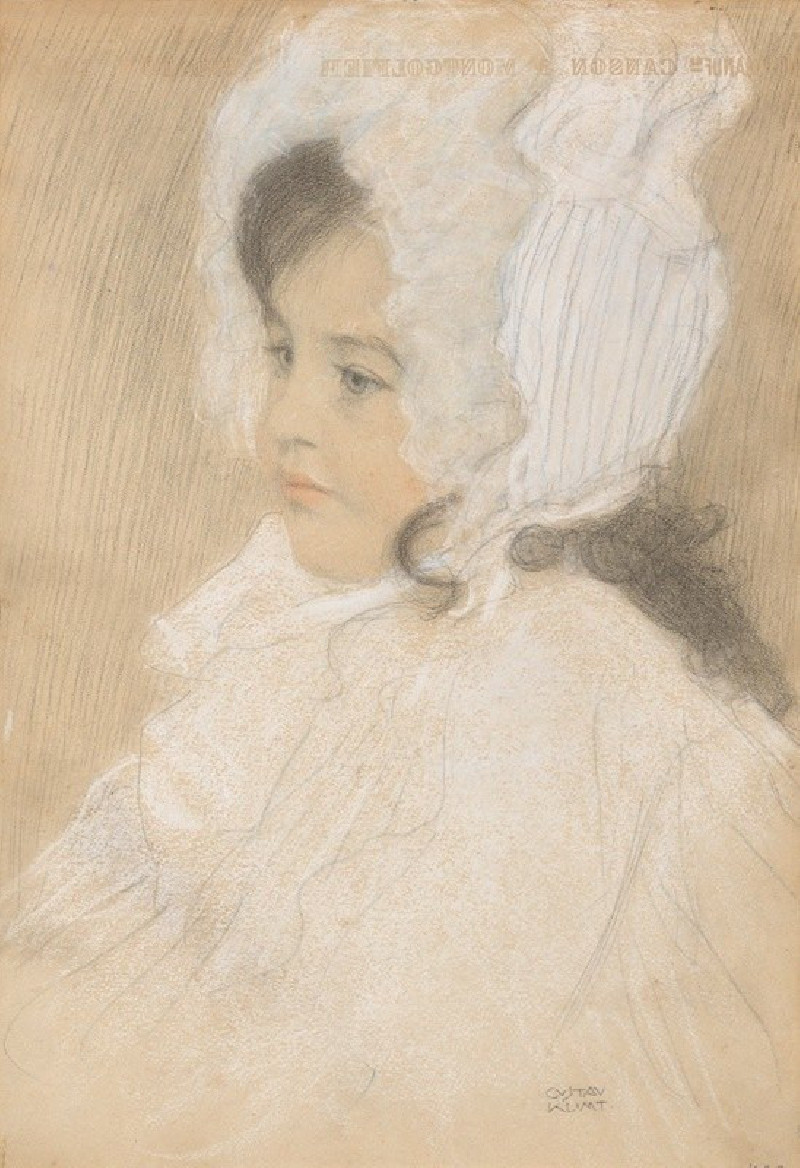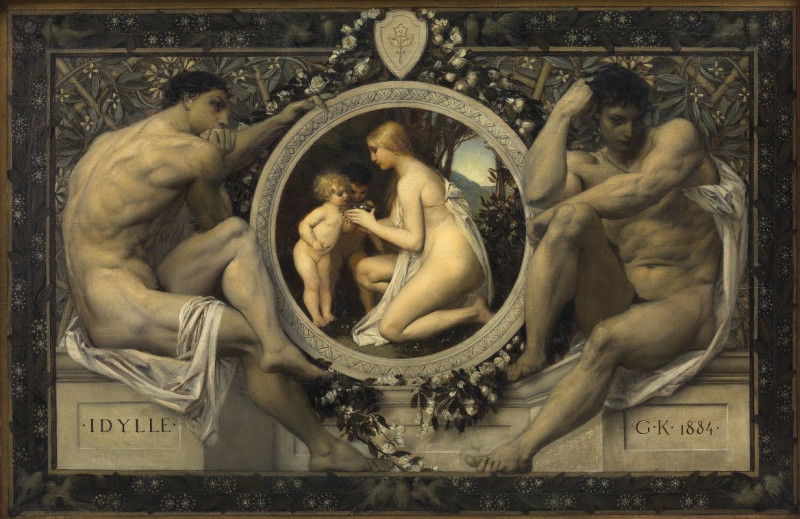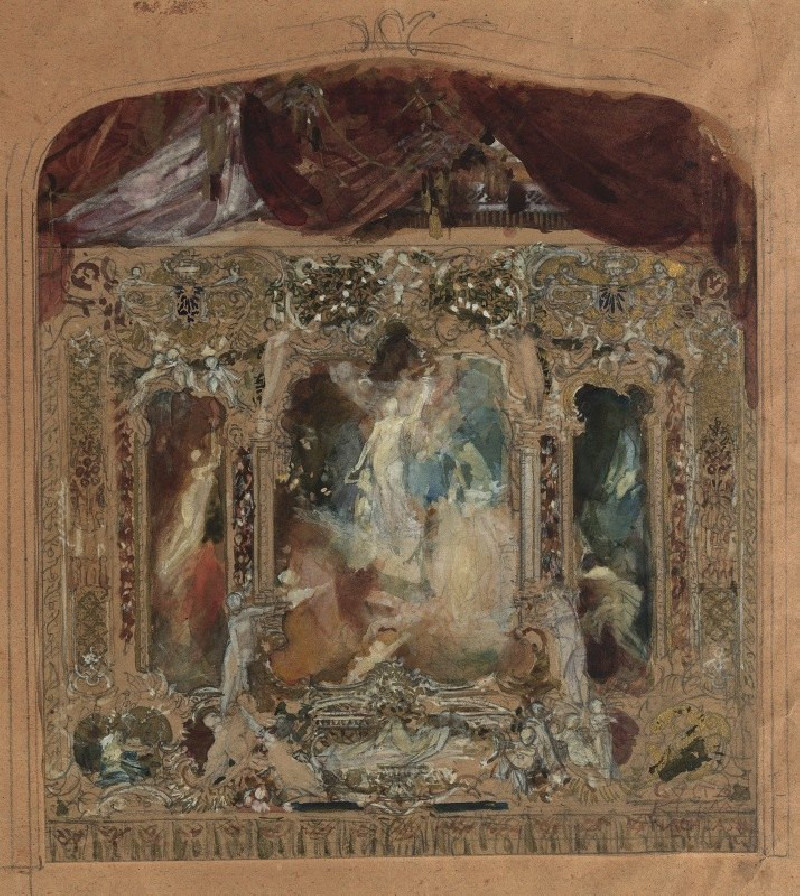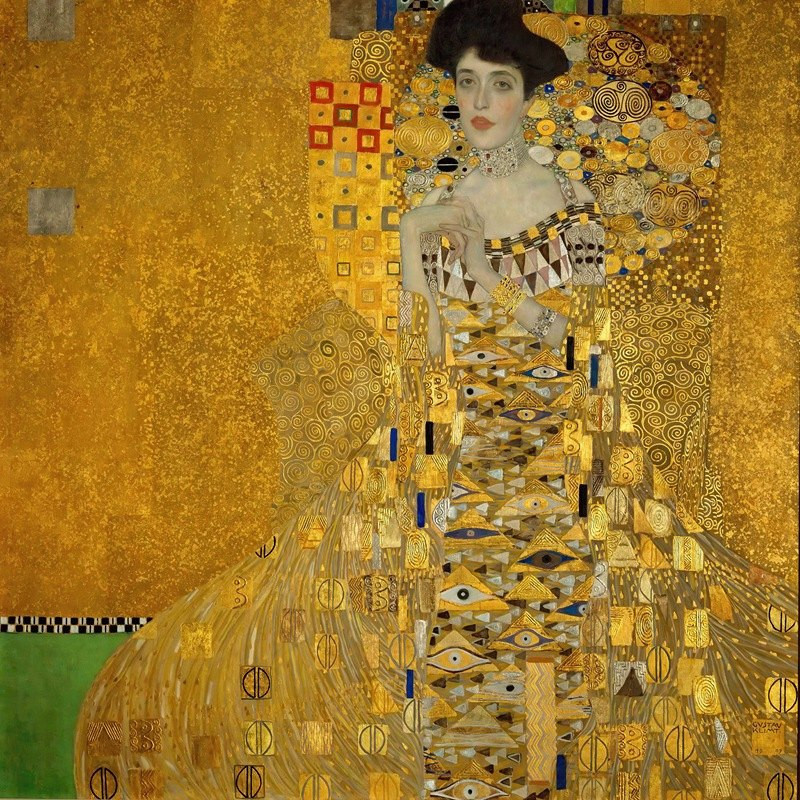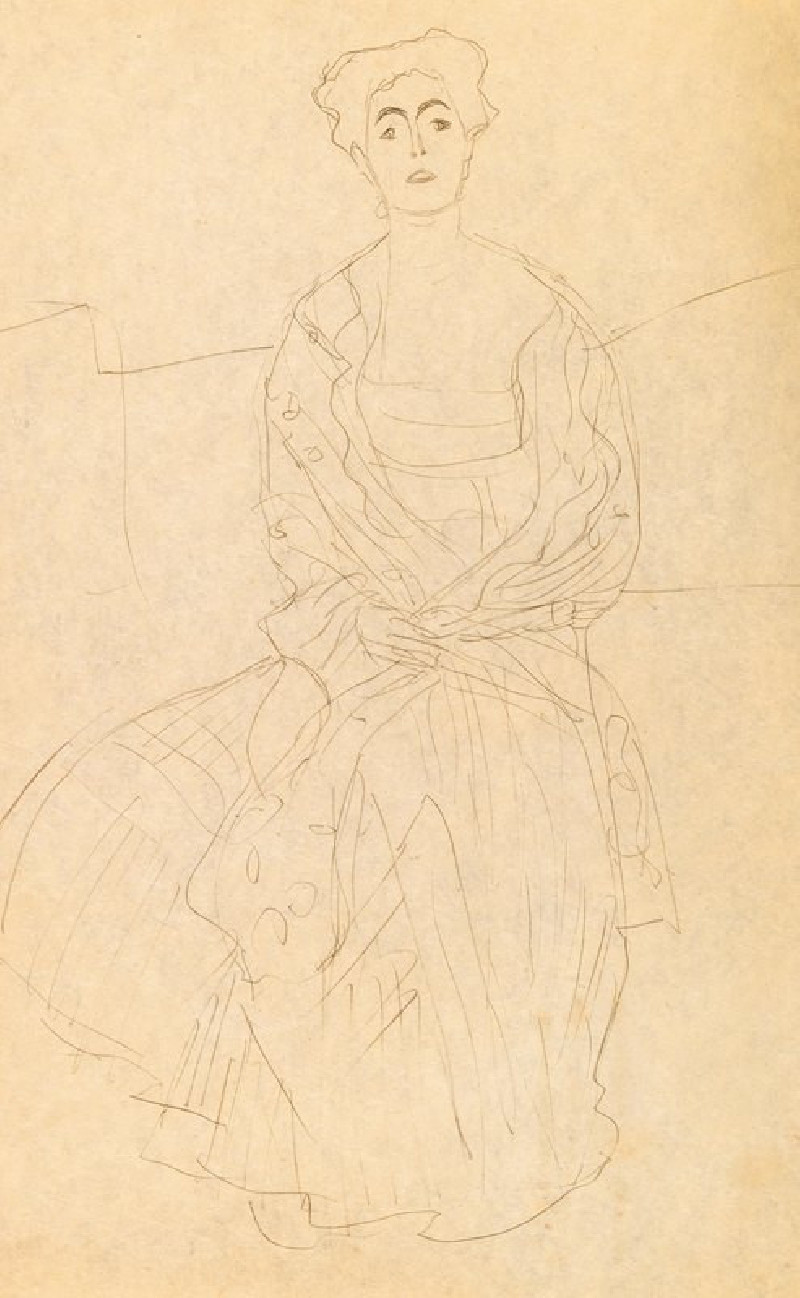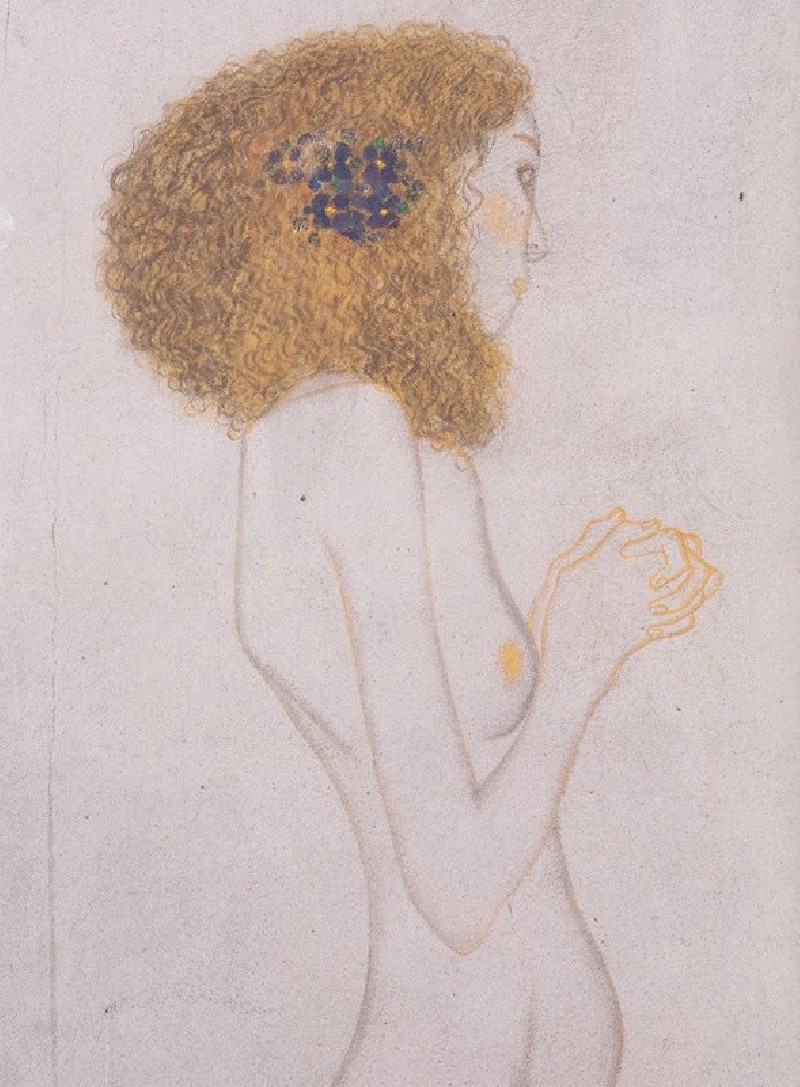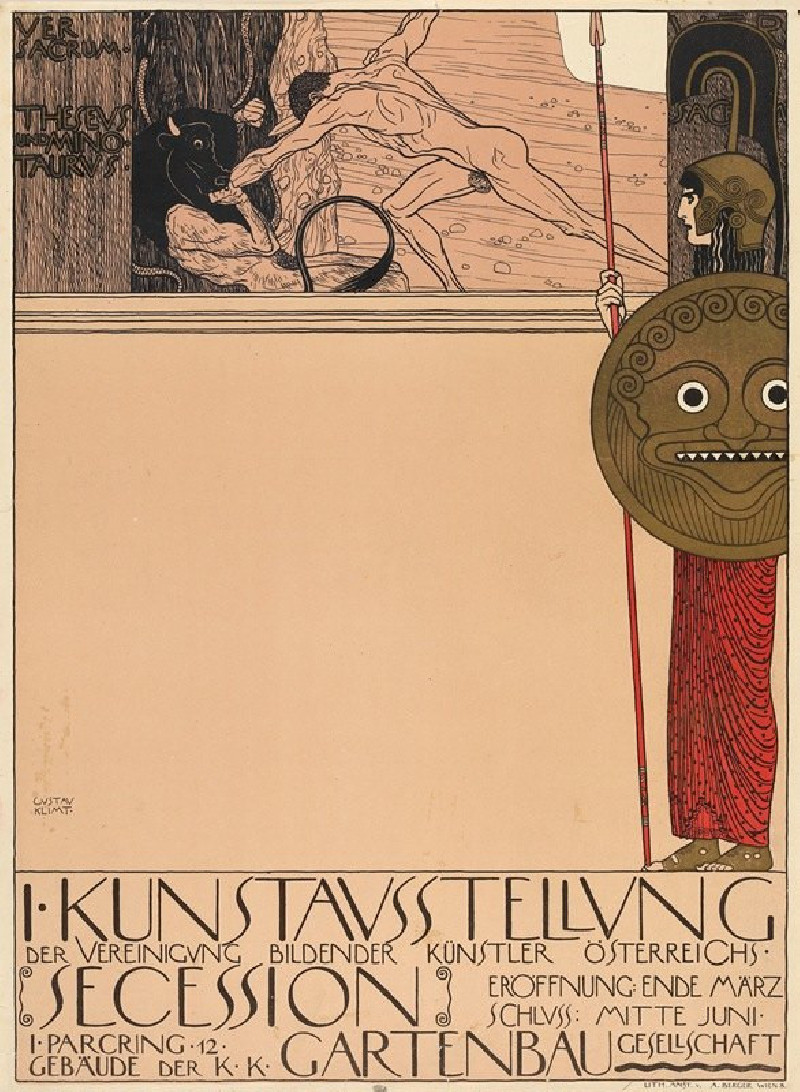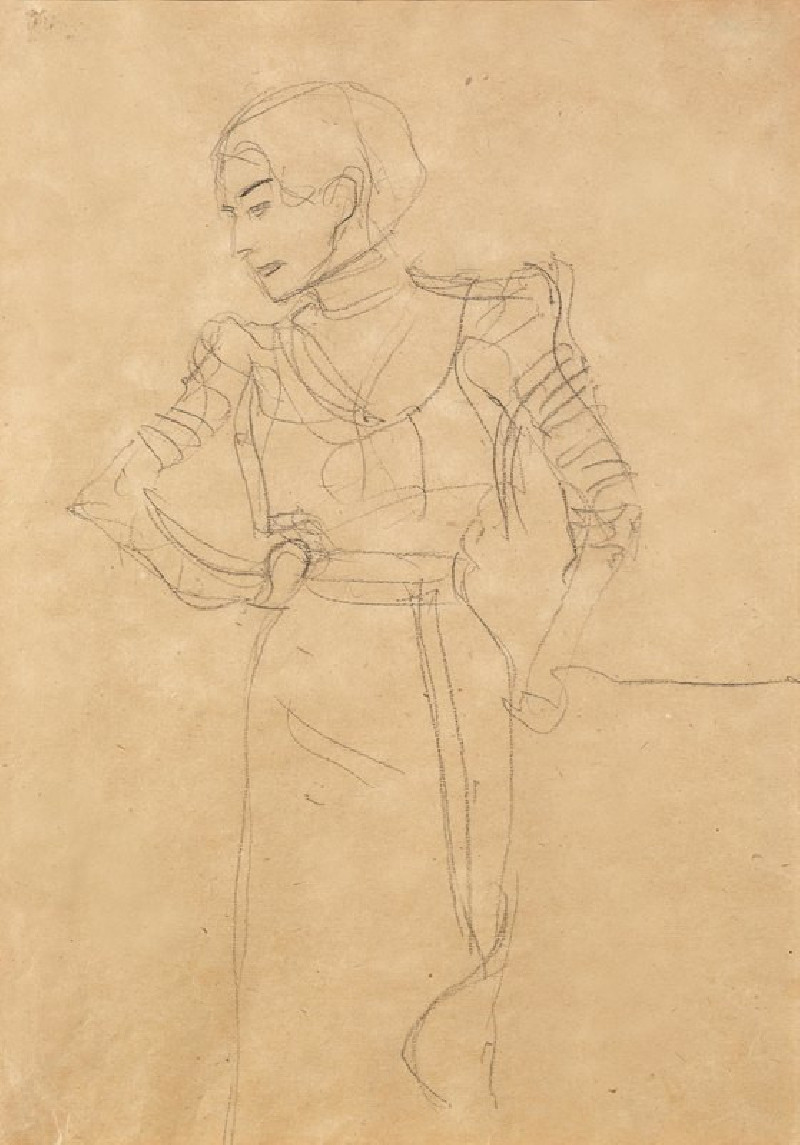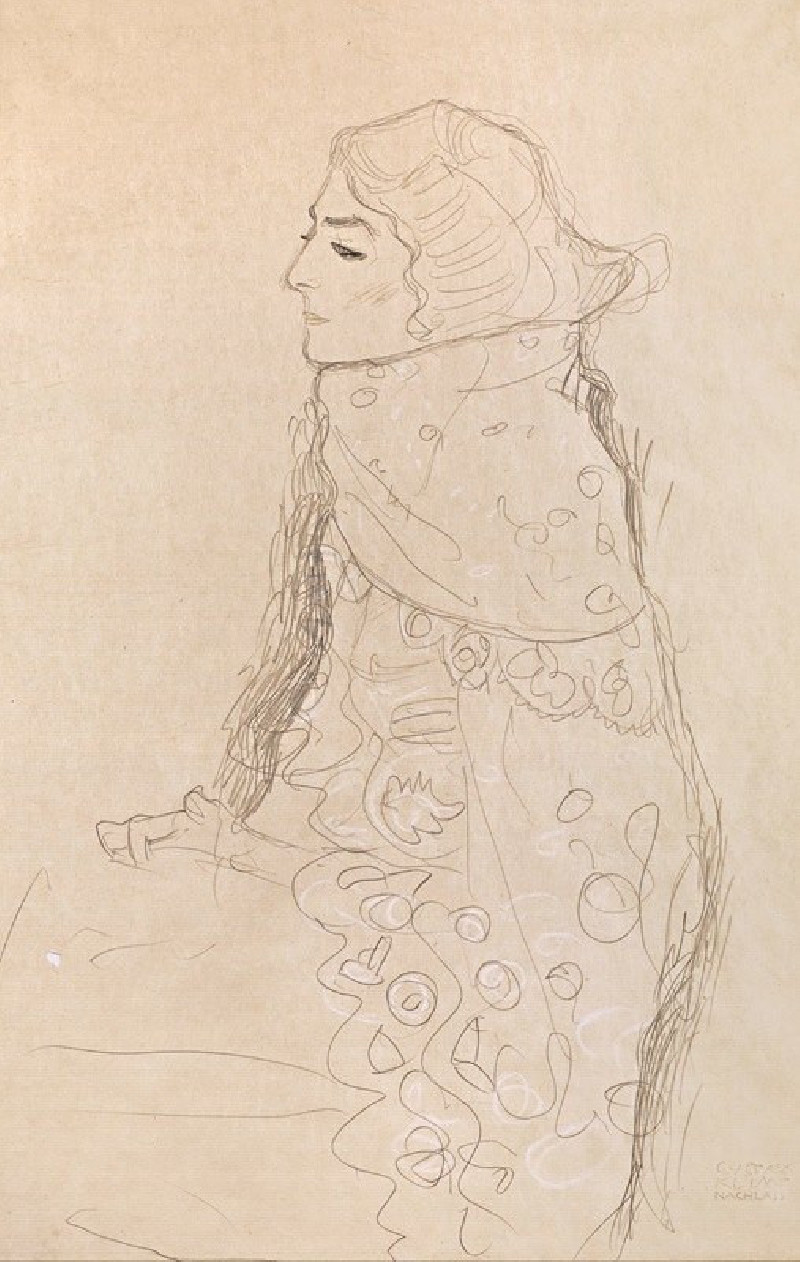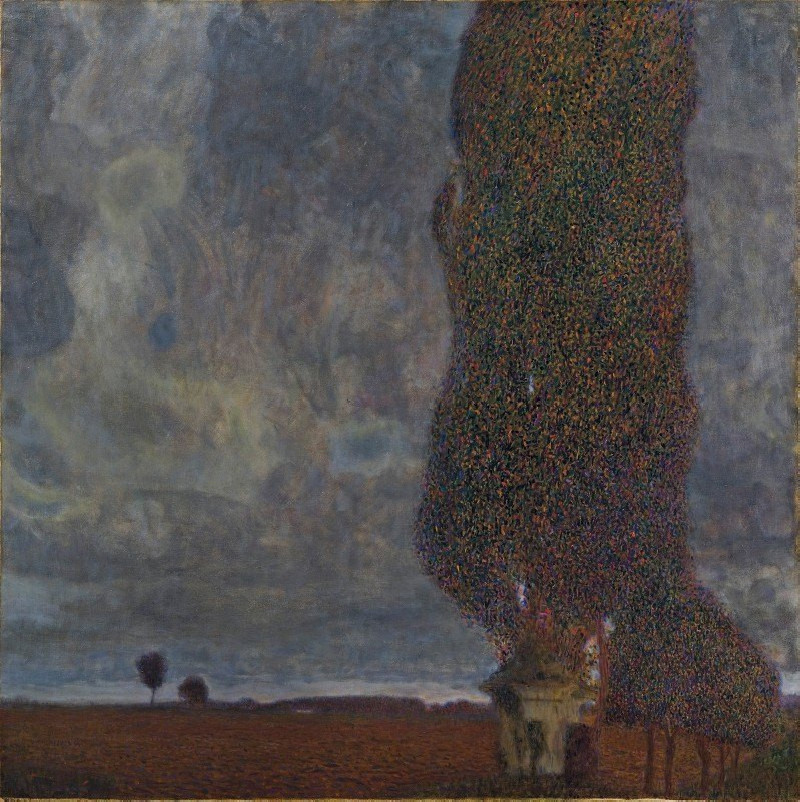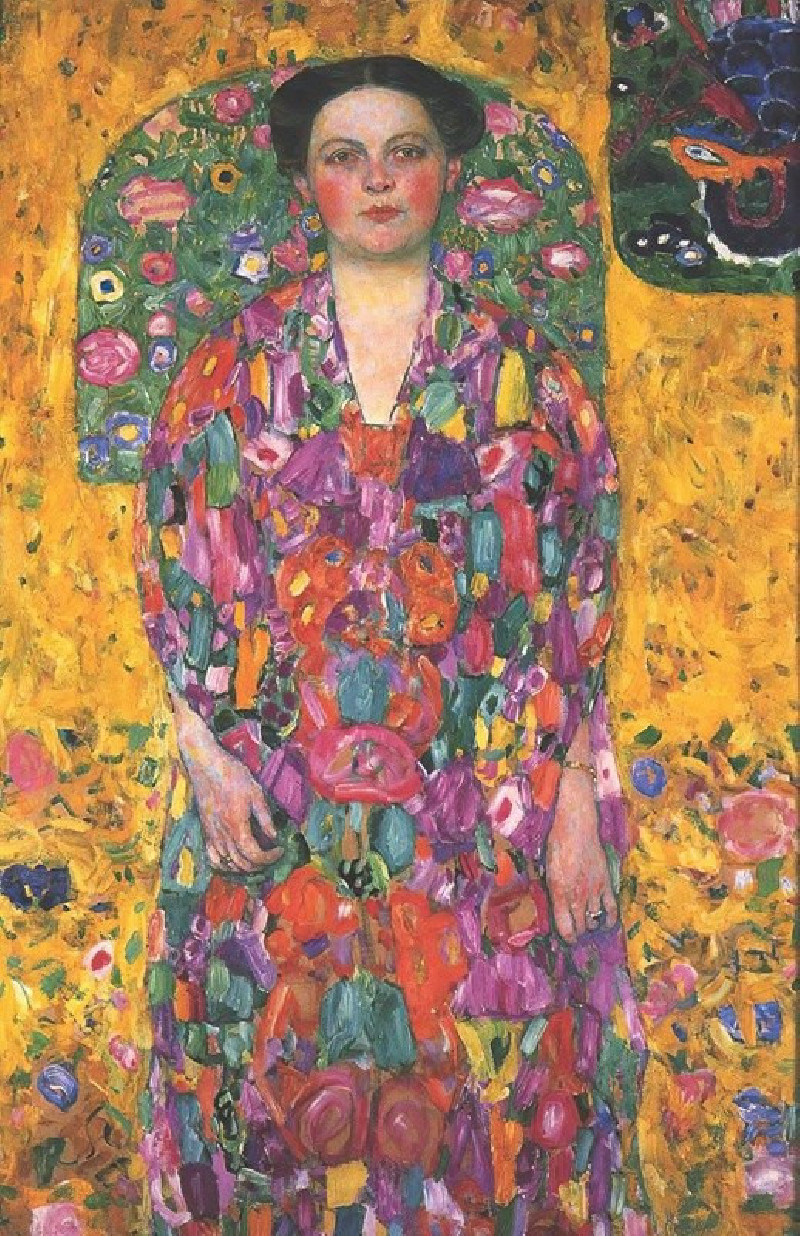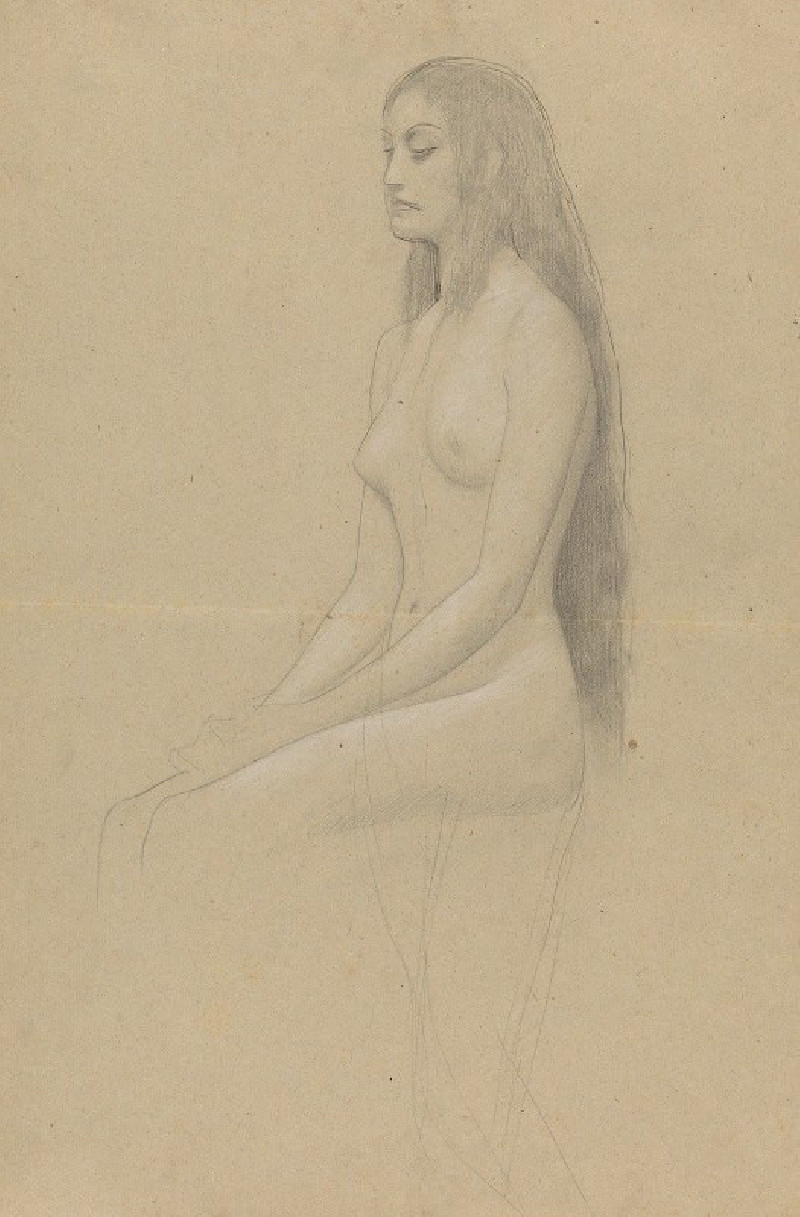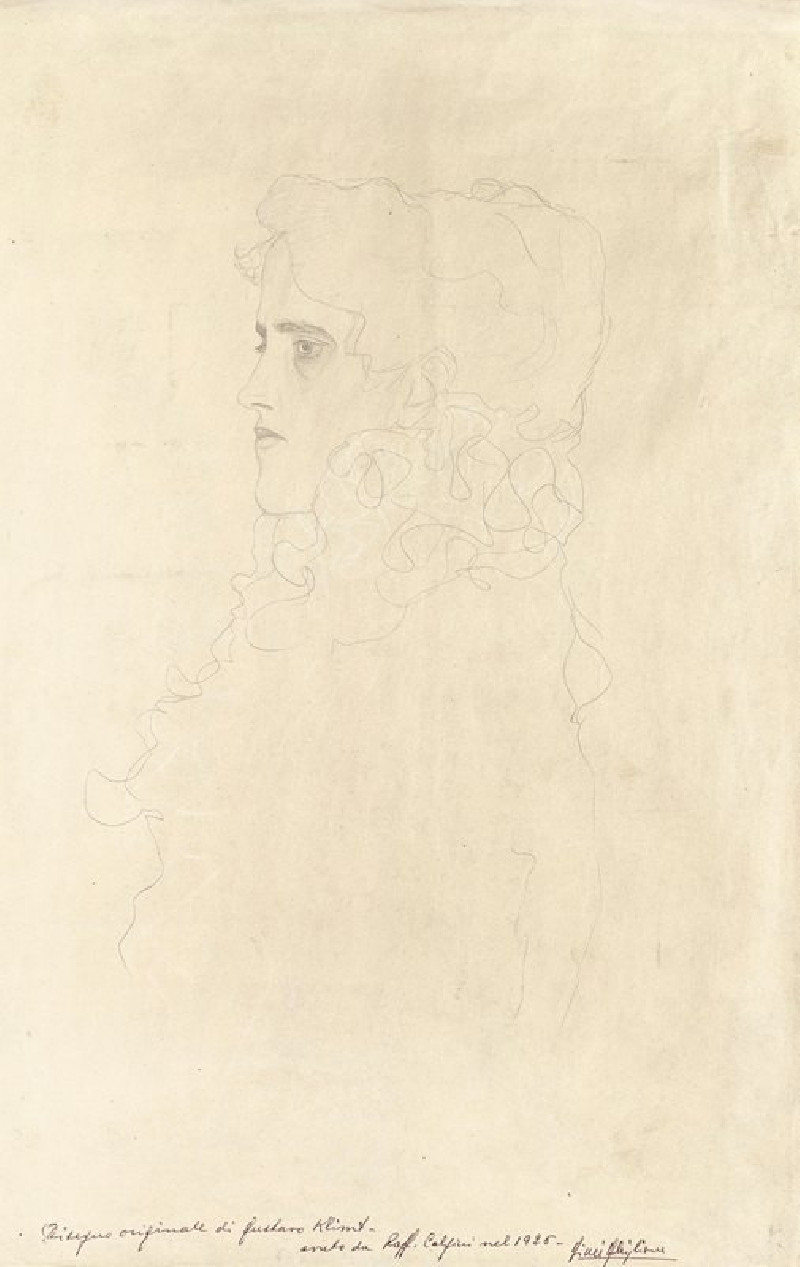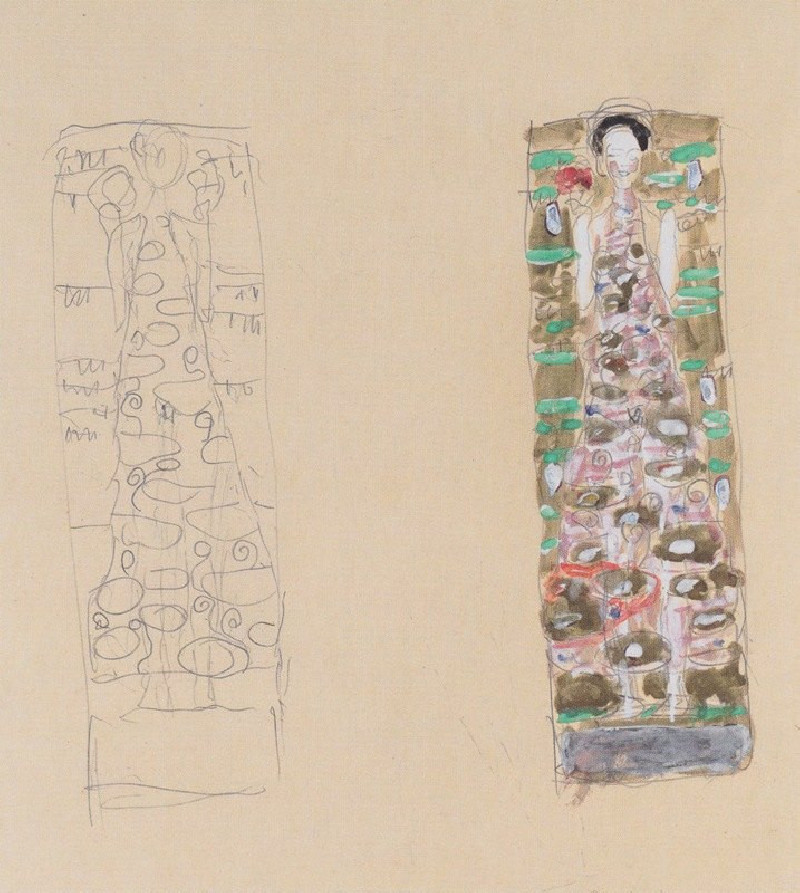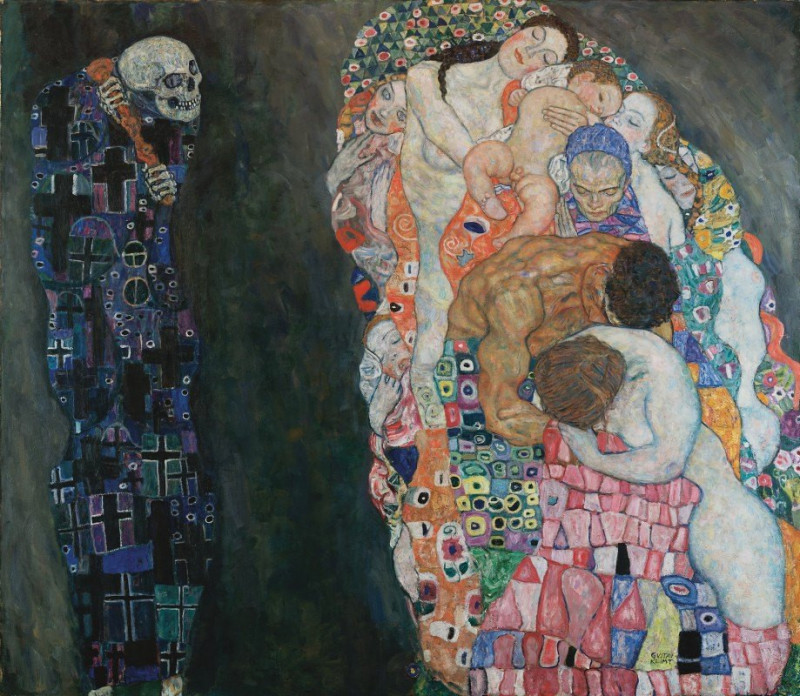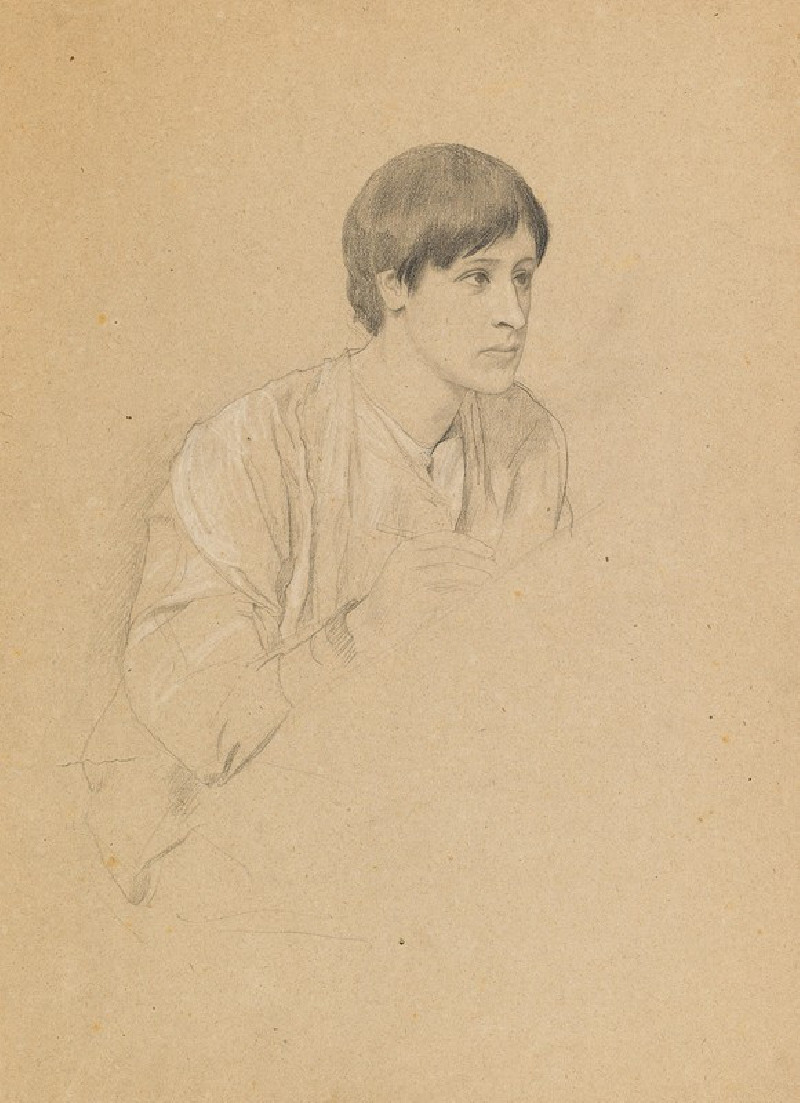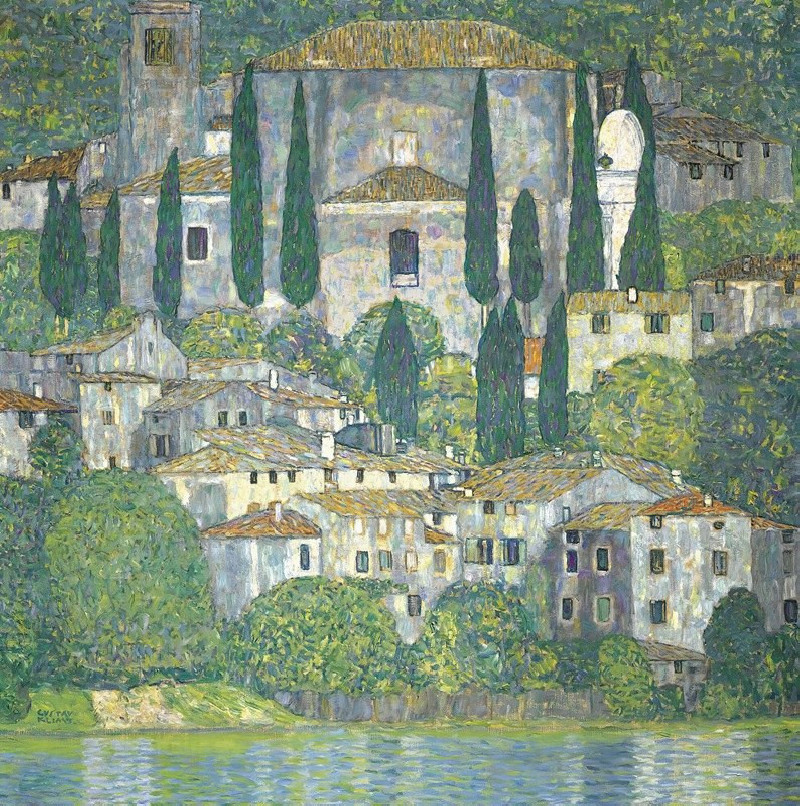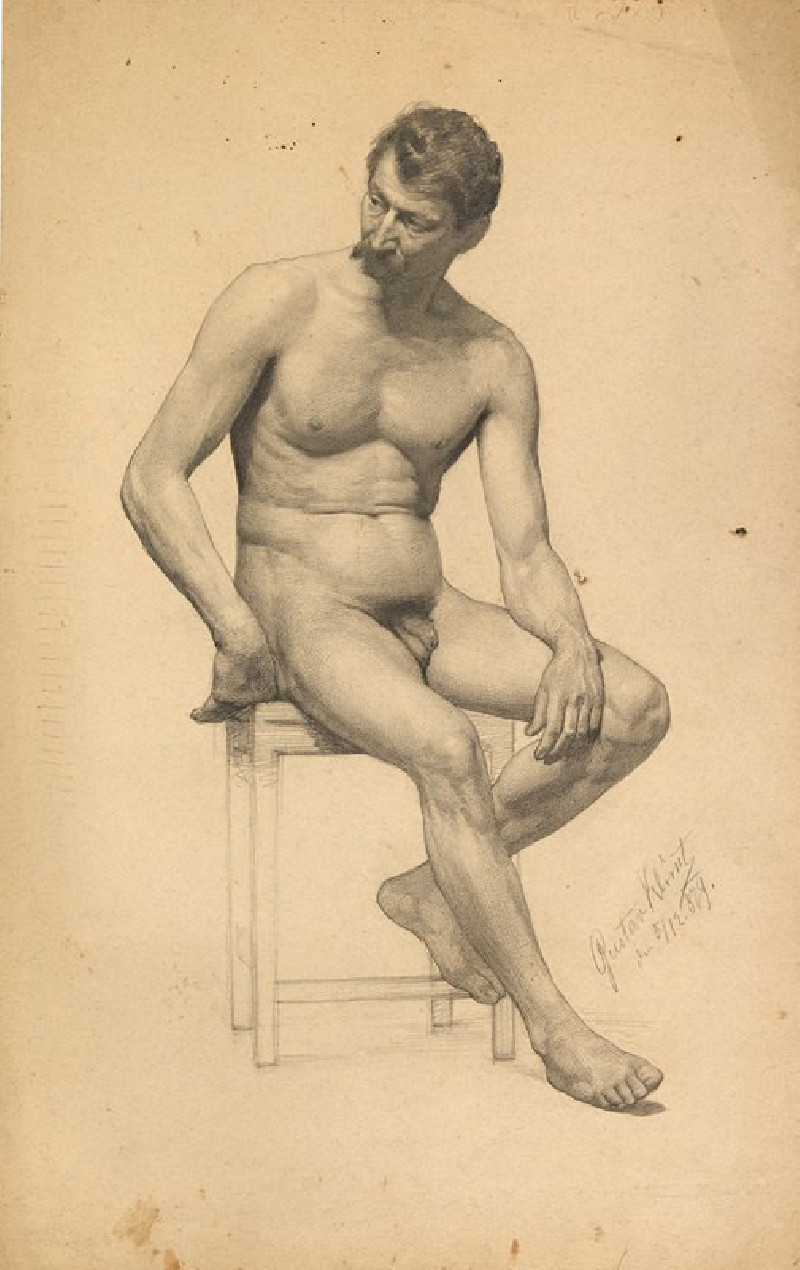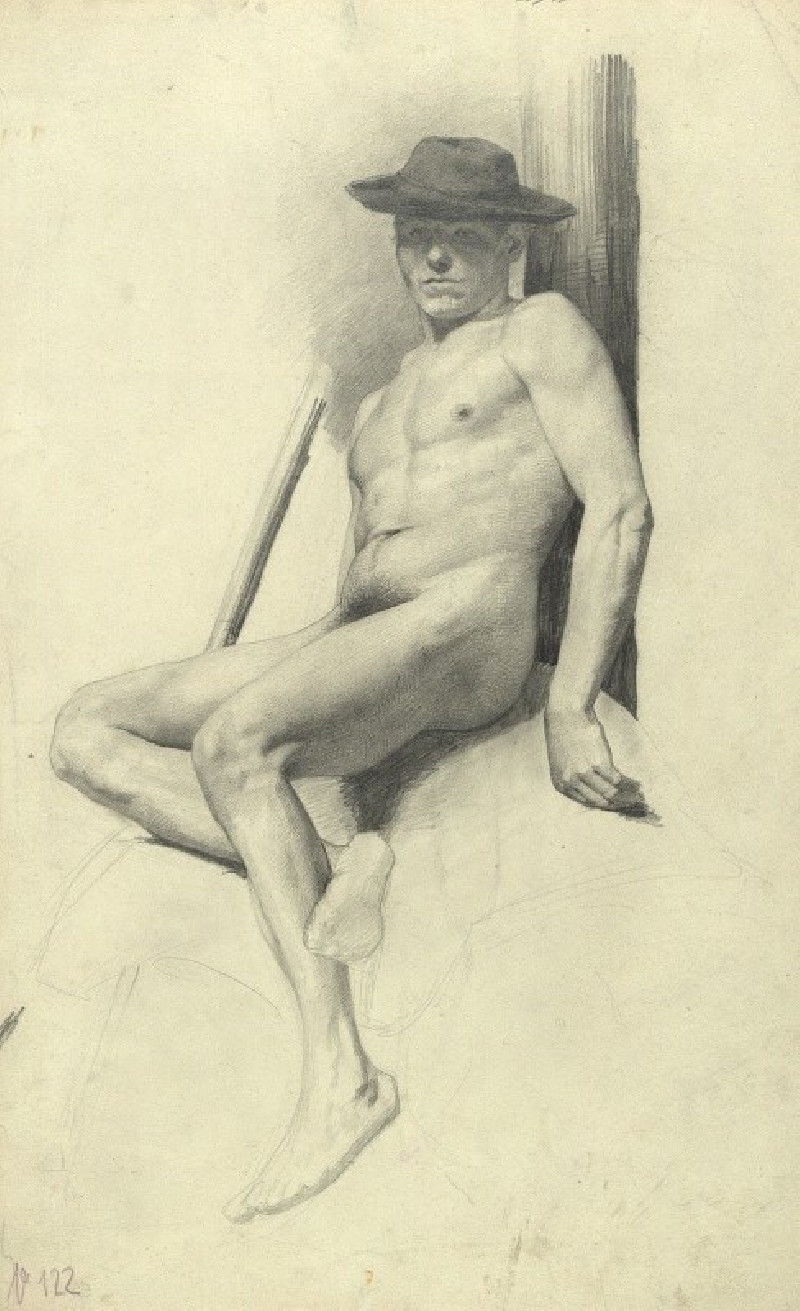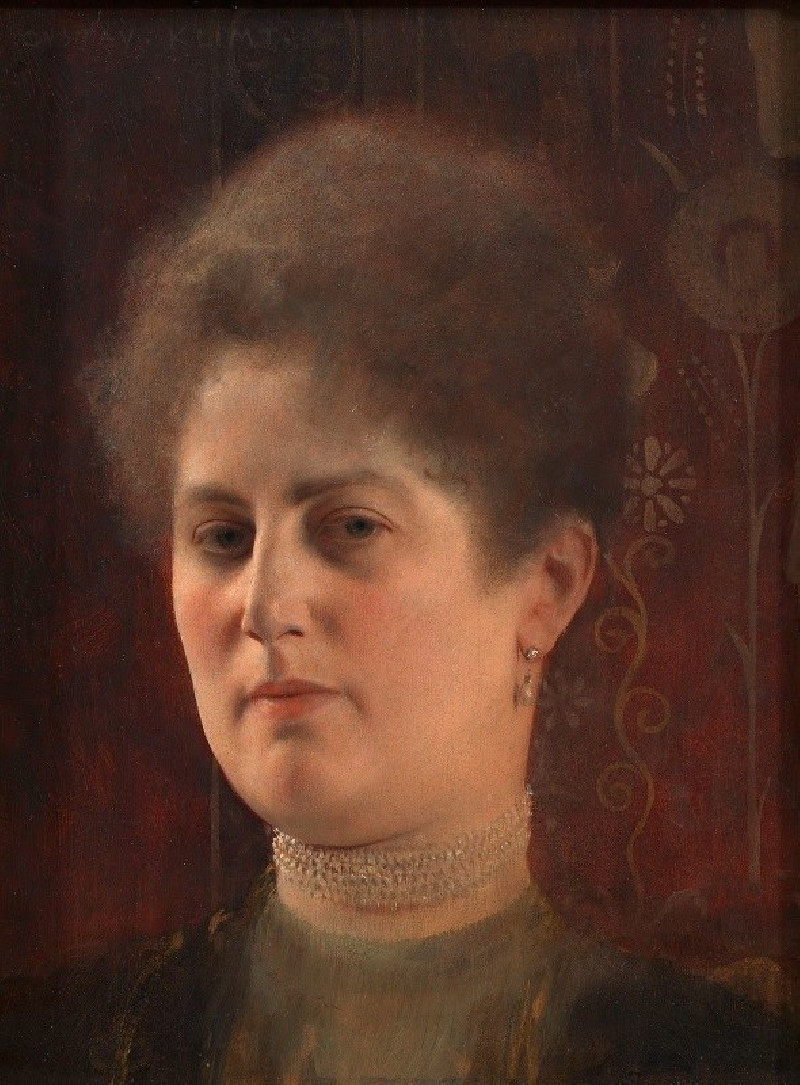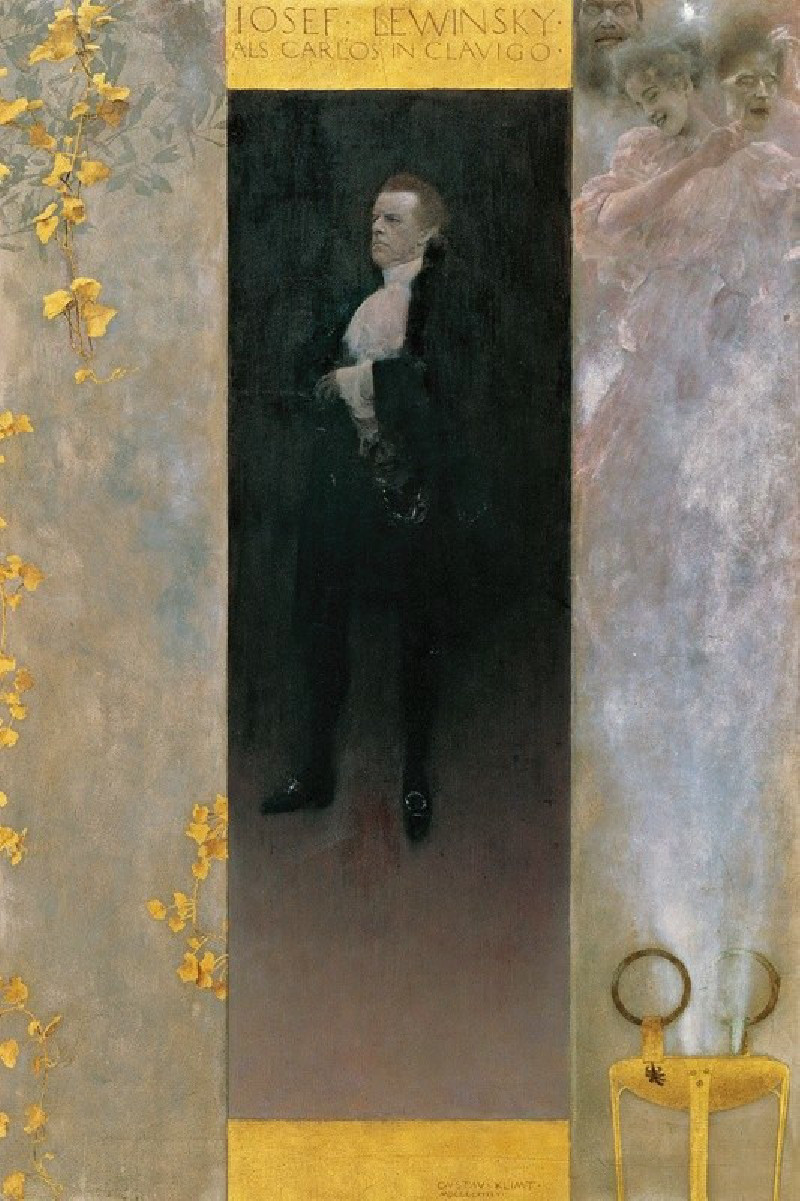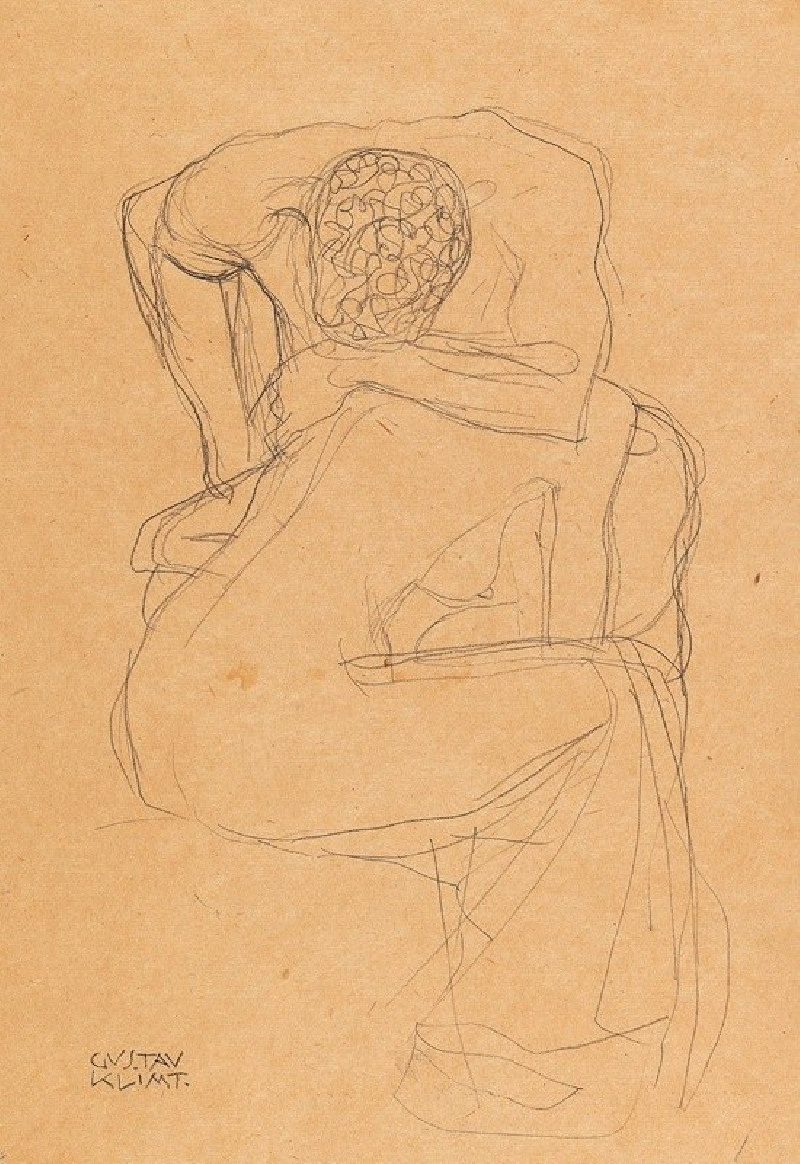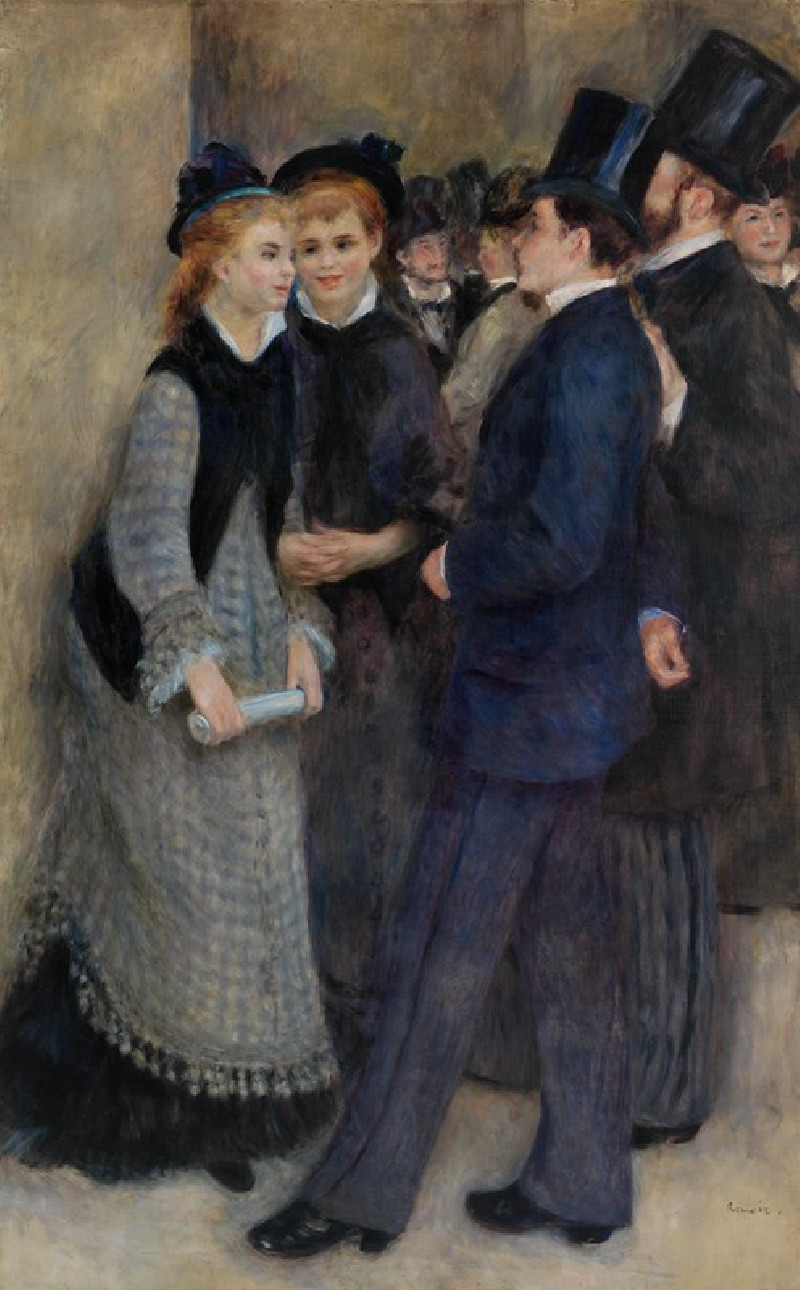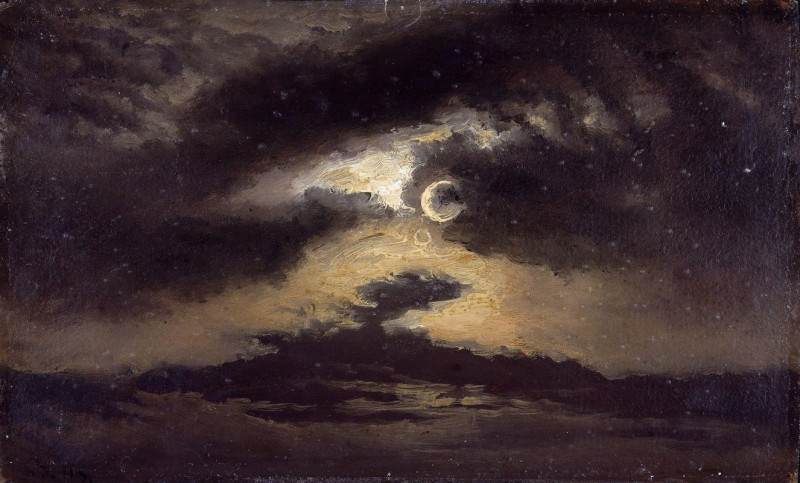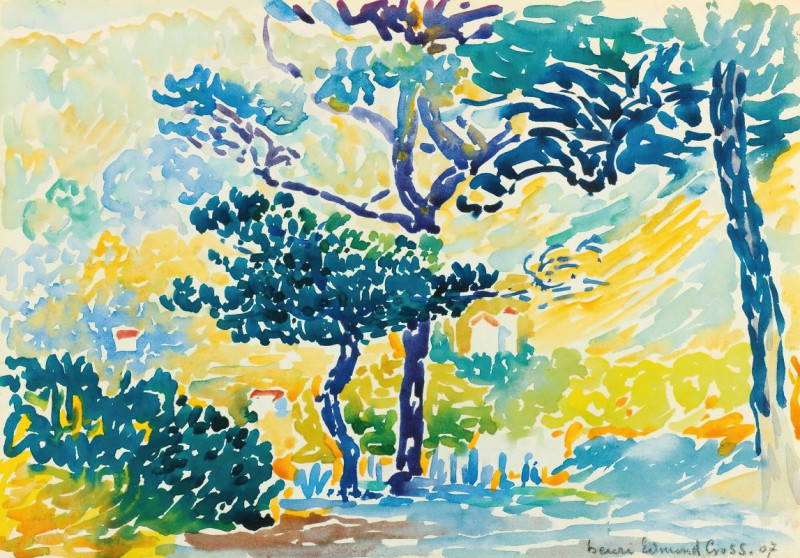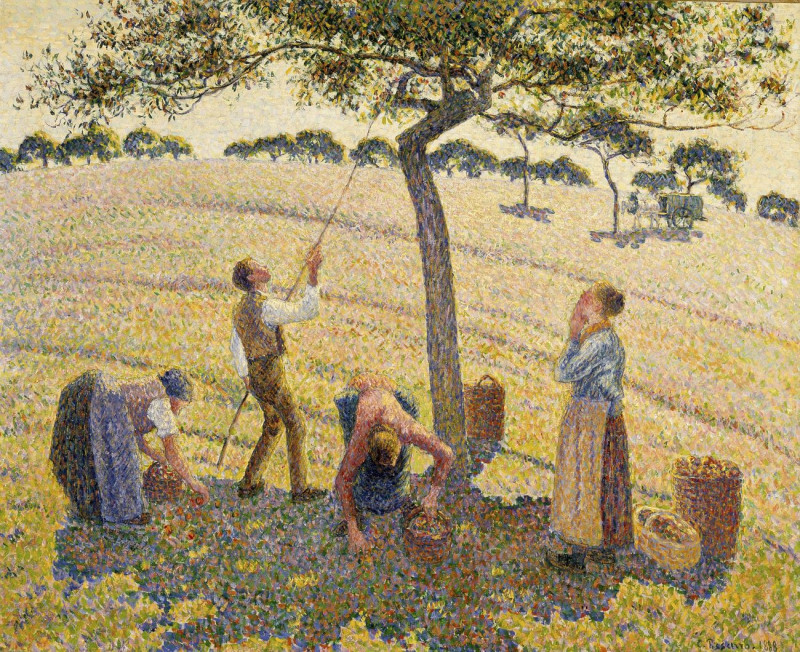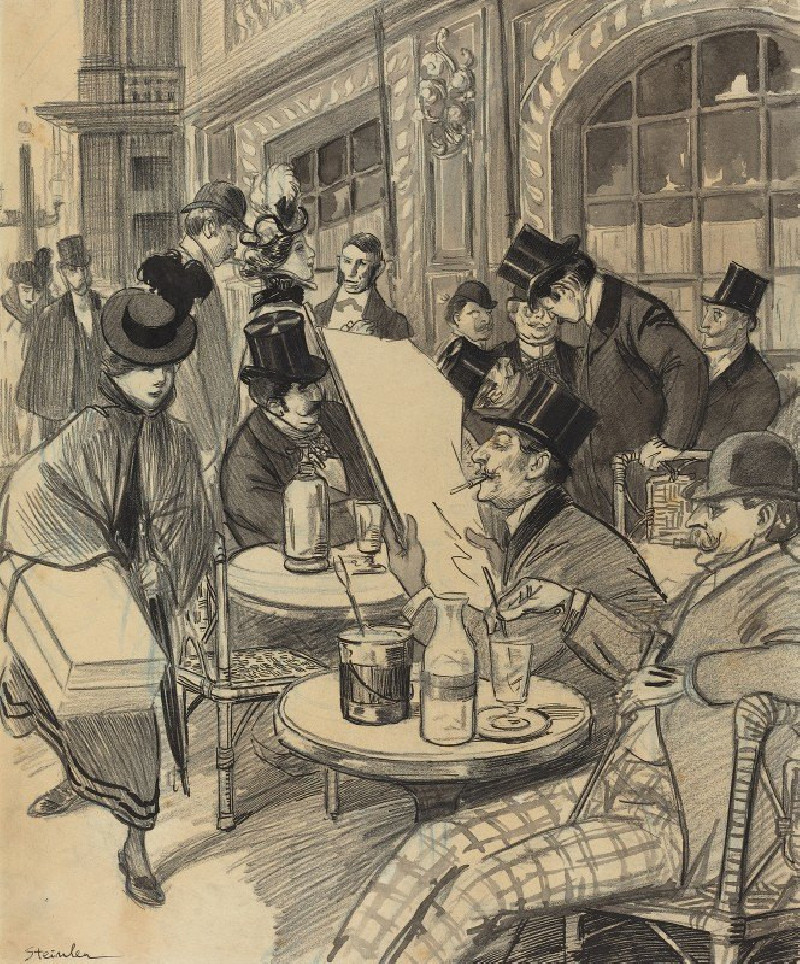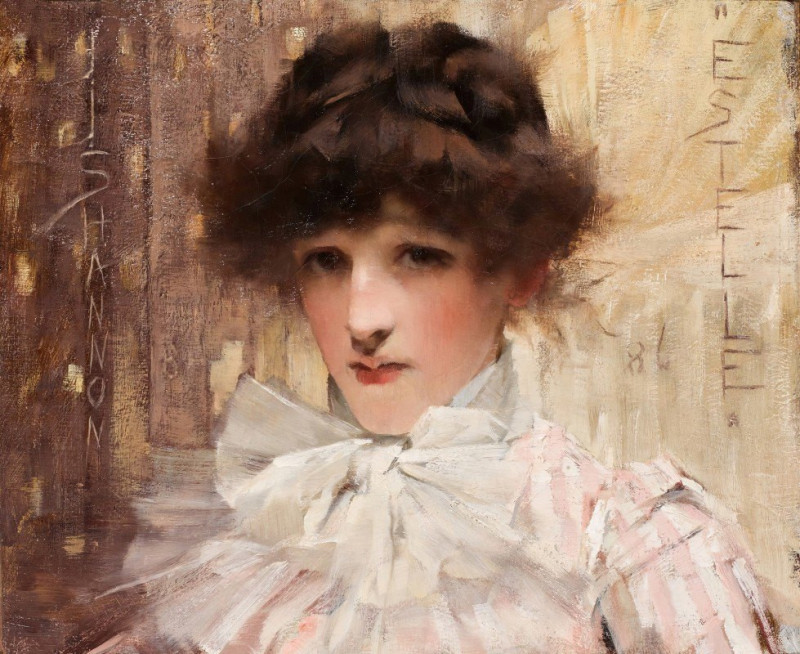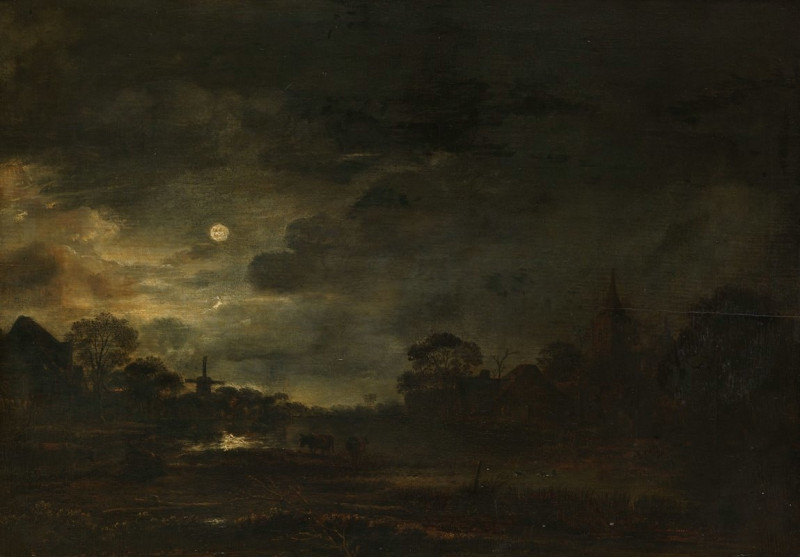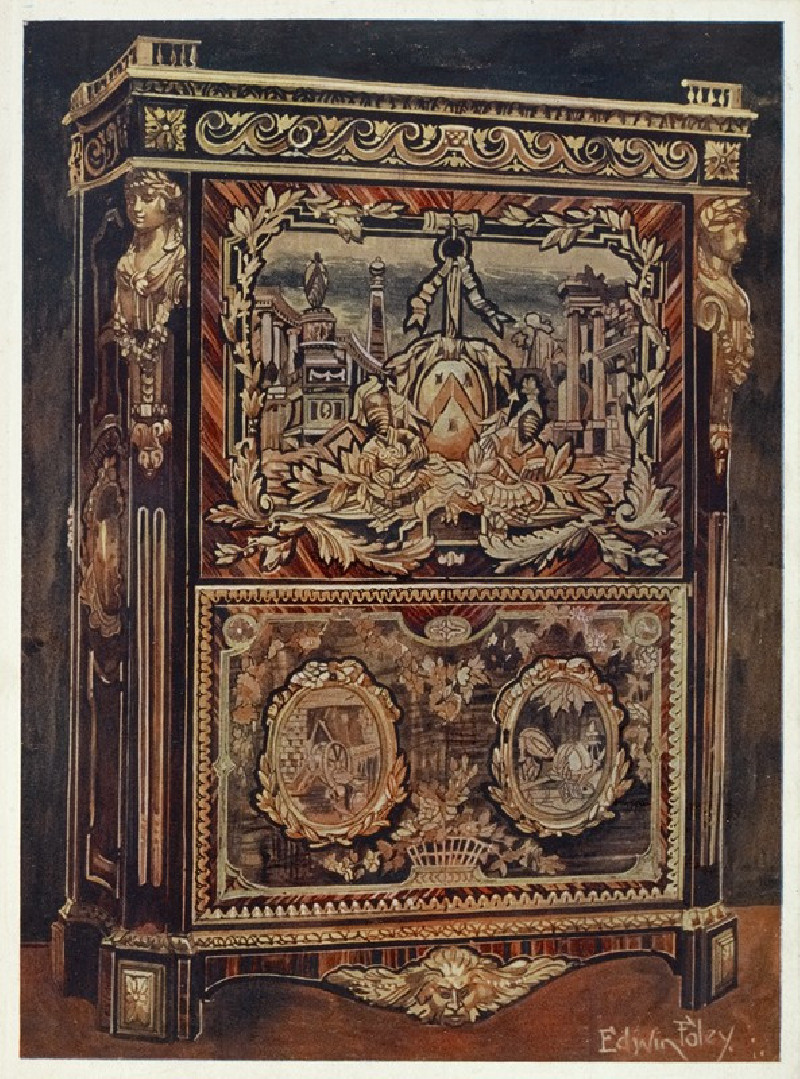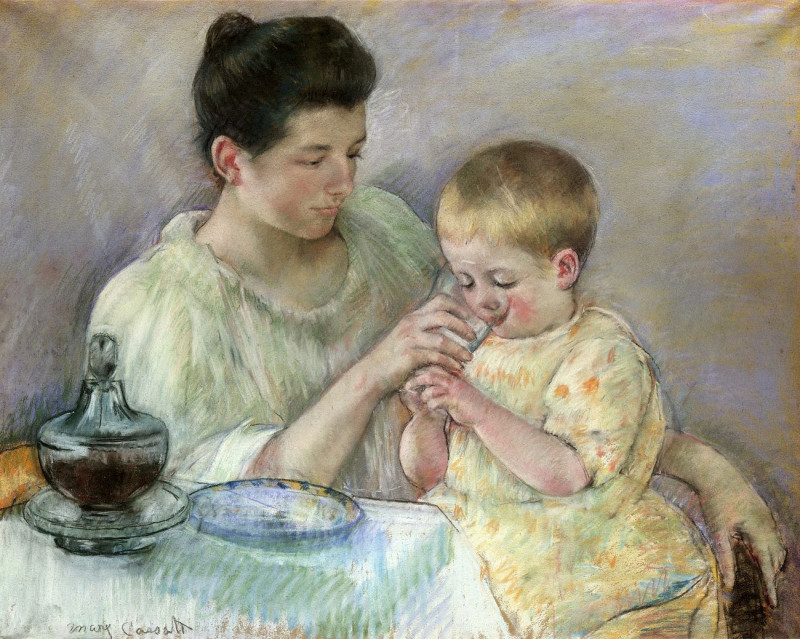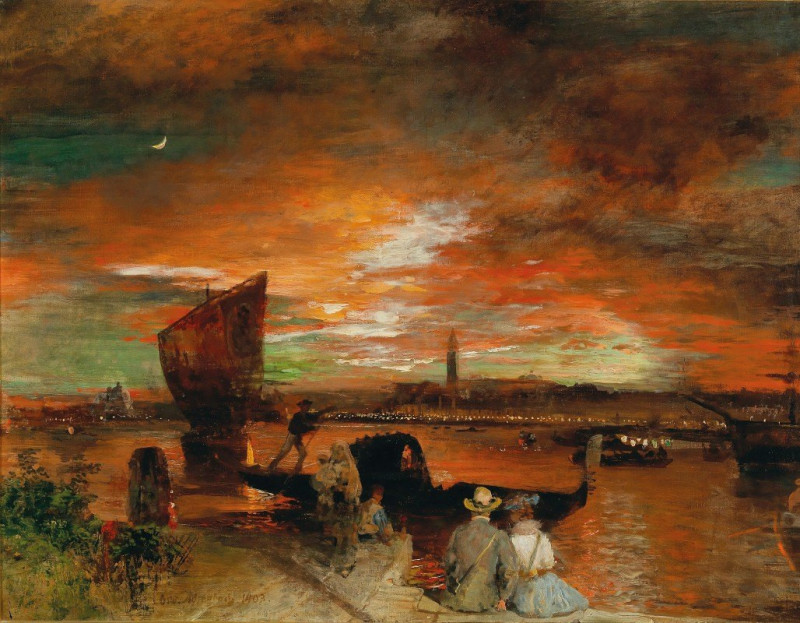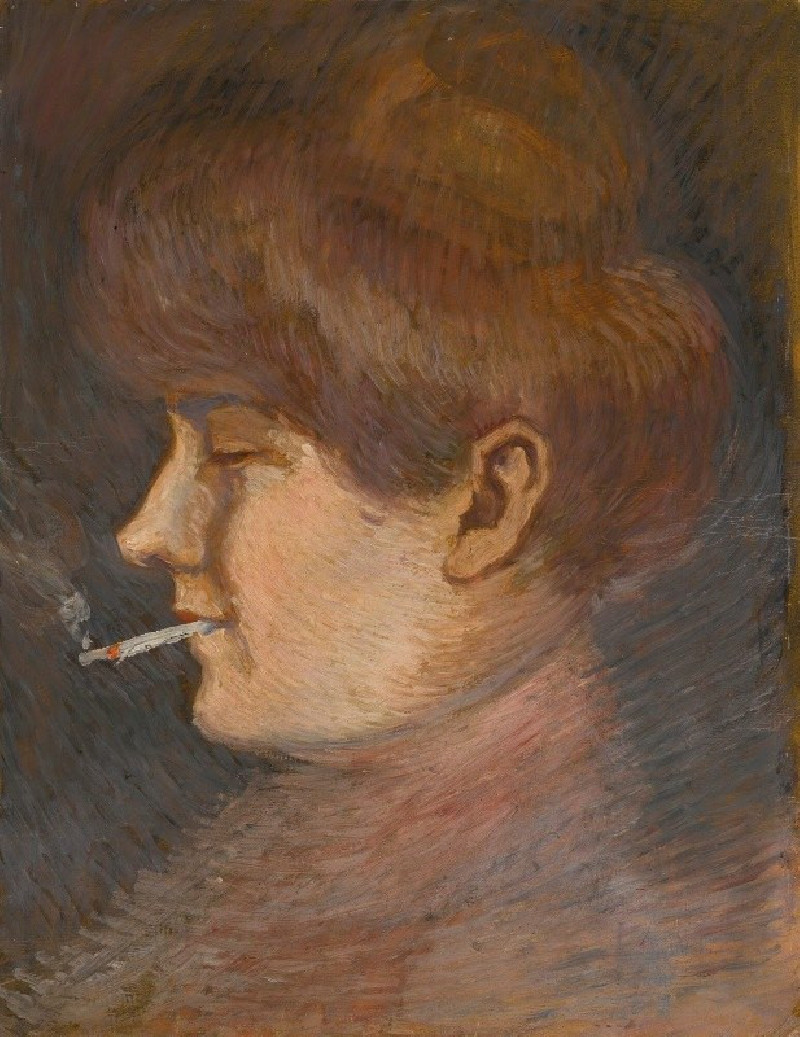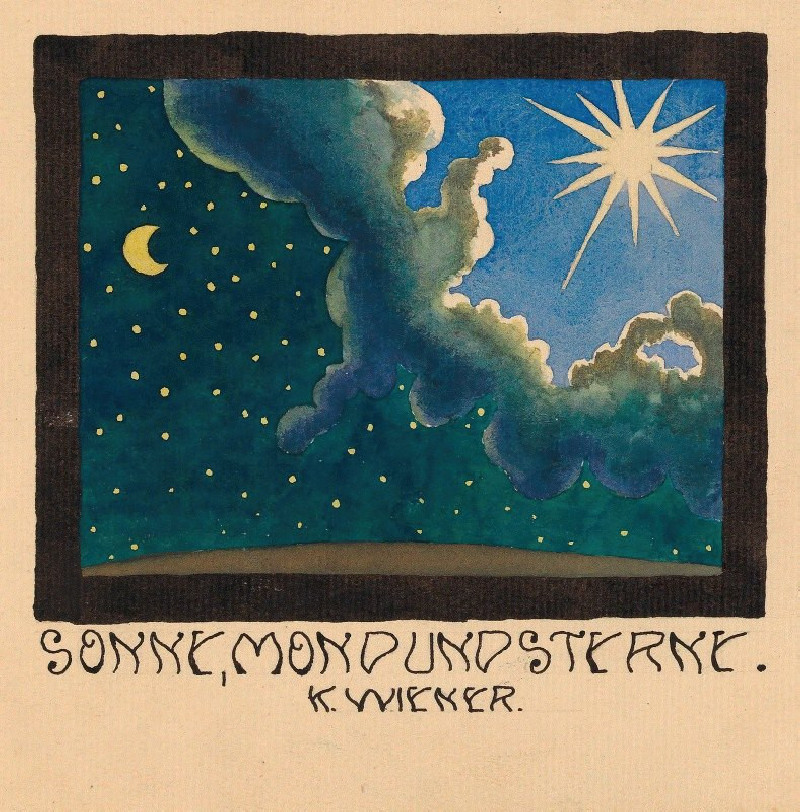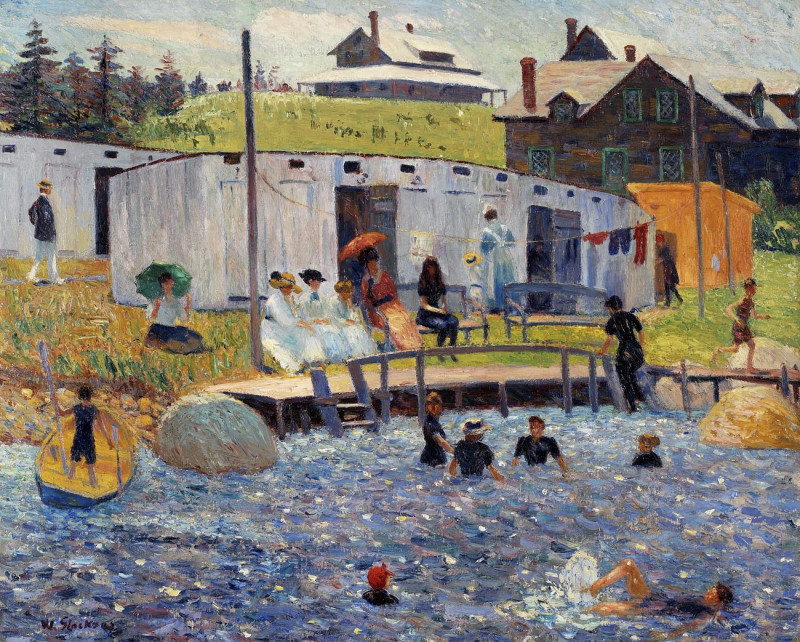Posthumous Portrait of Ria Munk III (ca 1917 - 1918)
Technique: Giclée quality print
Recommended by our customers
More about this artwork
The "Posthumous Portrait of Ria Munk III" is a captivating artwork created by the Austrian symbolist painter Gustav Klimt around 1917-1918. This painting engages viewers with its profound emotional depth and ornate detail, typical of Klimt’s renowned style.At the center of the composition stands Ria Munk, whose life tragically ended by suicide. Her portrayal by Klimt, however, vibrates with life, color, and texture, paradoxically immortalizing her youth and vitality. Ria's figure is gracefully elongated, a characteristic echo of Klimt's art nouveau influences. She gazes gently towards the viewer, her face framed by a blossom of colorful flowers that seem to celebrate her life rather than mourn her passing.The background is an elaborate tapestry of patterns and floral motifs, shimmering with vivid colors that include deep blues, purples, and pinks, intertwined with gold hues that catch the light and draw the eye. The use of gold, a hallmark of Klimt's work, adds a divine quality to the portrait, suggesting an almost celestial celebration of Ria’s figure amidst the blooms.This unfinished state of the portrait, with its blend of high detail in the face and the loose, more sketch-like handling of the body, invites viewers to ponder the artist's intent and the interruptions that prevented the painting's completion. The rawness of the incomplete features contrasts starkly with the fully realized segments, creating a poignant sense of what was and what might have been.Gustav Klimt’s "Posthumous Portrait of Ria Munk III" is not only a memorial of an individual life but also a stunning example of artistic expression bridging personal tragedy and sublime beauty.
Delivery
Returns
Gustav Klimt (1862–1918) was one of the greatest Austrian symbolist painters of the Art Nouveau era. Renowned as one of the most prominent founding members, and as a president of the Vienna Art Nouveau movement (Vienna Secession). His works were mainly paintings, murals, and sketches. Marked by his numerous erotic drawings, Klimt's primary subject were female figures, and at one point his work was even criticized as pornographic. Klimt found financial success in his "Golden Phase" with decorative techniques and the prominent use of gold leaf in his paintings.


